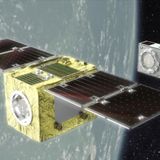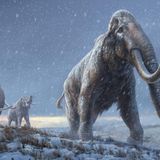RECENT ARTICLES

The UK's space agency is hunting for 'moon trees' grown from seeds that went on the Apollo 14 lunar mission | CNN
By , CNNLink Copied!Ad Feedback — Fifty years ago, completed the third crewed mission to the moon. On board the spacecraft as it landed in the Pacific Ocean on February 9, 1971, was some unusual cargo – about 500 tree seeds.The seeds – loblolly pine, sycamore, sweetgum, redwood and Douglas fir – had traveled with Stuart Roosa, one of the three NASA astronauts on the mission and a former US Forest Service parachute firefighter, sealed in small plastic pouches stored in a metal canister in his personal luggage. They were part of an experiment to see how seeds reacted to the space...…By , CNNLink Copied!Ad Feedback — Fifty years ago, completed the third crewed mission to the moon. On board the spacecraft as it landed in the Pacific Ocean on February 9, 1971, was some unusual cargo – about 500 tree seeds.The seeds – loblolly pine, sycamore, sweetgum, redwood and Douglas fir – had traveled with Stuart Roosa, one of the three NASA astronauts on the mission and a former US Forest Service parachute firefighter, sealed in small plastic pouches stored in a metal canister in his personal luggage. They were part of an experiment to see how seeds reacted to the space...WW…
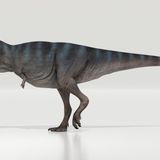
Tyrannosaurus rex walked surprisingly slowly, new study finds | CNN
By , CNNLink Copied!Ad Feedback — Tyrannosaurus rex was a fearsome predator, but it sure wasn’t a particularly fast mover. In fact, most humans could easily keep up with the dinosaur without breaking a sweat.T. rex would have covered just under 3 miles in an hour – a speed similar to that of humans and many other animals – at its preferred walking speed, according to new calculations by Dutch paleontologists. However, this pace is slower than other estimates of the tyrant lizard king’s walking speed.When they have no reason to run, most animals – including humans – have a natural...…By , CNNLink Copied!Ad Feedback — Tyrannosaurus rex was a fearsome predator, but it sure wasn’t a particularly fast mover. In fact, most humans could easily keep up with the dinosaur without breaking a sweat.T. rex would have covered just under 3 miles in an hour – a speed similar to that of humans and many other animals – at its preferred walking speed, according to new calculations by Dutch paleontologists. However, this pace is slower than other estimates of the tyrant lizard king’s walking speed.When they have no reason to run, most animals – including humans – have a natural...WW…
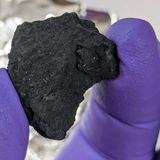
Rare meteorite that fell on UK driveway may contain 'ingredients for life'
Stay Updated on Developing StoriesView in AppBy Katie Hunt, CNN(CNN) A fireball that lit up the sky over the United Kingdom and Northern Europe on February 28 was an extremely rare type of meteorite. Fragments of the space rock discovered on a driveway in the Cotswolds could provide answers to questions about the early history of the solar system and life on Earth.Almost 300 grams (10.6 ounces) of the meteorite have been collected from the small Gloucestershire town of Winchcombe by scientists, who said the rock was formed of carbonaceous chondrite. The substance is some of the most...…Stay Updated on Developing StoriesView in AppBy Katie Hunt, CNN(CNN) A fireball that lit up the sky over the United Kingdom and Northern Europe on February 28 was an extremely rare type of meteorite. Fragments of the space rock discovered on a driveway in the Cotswolds could provide answers to questions about the early history of the solar system and life on Earth.Almost 300 grams (10.6 ounces) of the meteorite have been collected from the small Gloucestershire town of Winchcombe by scientists, who said the rock was formed of carbonaceous chondrite. The substance is some of the most...WW…
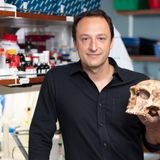
Neanderthal genes can change clusters of human brain tissue, scientists find | CNN
By , CNNLink Copied!Ad Feedback — Brains are not preserved in the fossil record, making it impossible to know how modern human brains differ from our long-extinct ancestors, the Neanderthals.From fossilized skulls we know that their brains were big – slightly bigger than ours, in fact – but they tell us little about their neurology and development.Scientists from the University of California San Diego have come up with an exciting and provocative way to begin to answer this question. They have created blobs of brain tissue genetically modified to carry a gene that belonged to...…By , CNNLink Copied!Ad Feedback — Brains are not preserved in the fossil record, making it impossible to know how modern human brains differ from our long-extinct ancestors, the Neanderthals.From fossilized skulls we know that their brains were big – slightly bigger than ours, in fact – but they tell us little about their neurology and development.Scientists from the University of California San Diego have come up with an exciting and provocative way to begin to answer this question. They have created blobs of brain tissue genetically modified to carry a gene that belonged to...WW…
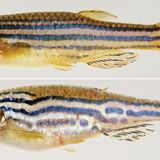
One change took this fish from fins to limbs
(CNN)Life on Earth began in the water. When animals moved onto the ground, they switched fins for limbs. How exactly that might have happened hundreds of millions of years ago, however, has long been an evolutionary mystery that has puzzled scientists. Now, US scientists say they may have stumbled on a possible answer.By tweaking a single gene, researchers at Harvard University and Boston Children's Hospital have engineered zebrafish that showed the beginning of limblike appendages. To answer how animals made the transition from sea to land, scientists have traditionally looked to the...…(CNN)Life on Earth began in the water. When animals moved onto the ground, they switched fins for limbs. How exactly that might have happened hundreds of millions of years ago, however, has long been an evolutionary mystery that has puzzled scientists. Now, US scientists say they may have stumbled on a possible answer.By tweaking a single gene, researchers at Harvard University and Boston Children's Hospital have engineered zebrafish that showed the beginning of limblike appendages. To answer how animals made the transition from sea to land, scientists have traditionally looked to the...WW…
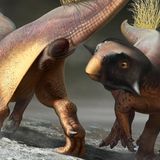
This fossil reveals how dinosaurs peed, pooped and had sex
(CNN)We know a lot about dinosaurs -- what and -- but no fossils have definitively preserved two dinosaurs in the act of mating.However, a fossil from China of a Psittacosaurus is so well preserved that the opening the Labrador-size dinosaur used to pee, poop and reproduce is visible, allowing paleontologists to study it for the first time.While it doesn't offer any concrete answers on how dinosaurs may have procreated, it does give some hints. "We don't have any dinosaur fossils where you can be confident they've been caught in the act," said Jakob Vinther, a paleontologist and senior...…(CNN)We know a lot about dinosaurs -- what and -- but no fossils have definitively preserved two dinosaurs in the act of mating.However, a fossil from China of a Psittacosaurus is so well preserved that the opening the Labrador-size dinosaur used to pee, poop and reproduce is visible, allowing paleontologists to study it for the first time.While it doesn't offer any concrete answers on how dinosaurs may have procreated, it does give some hints. "We don't have any dinosaur fossils where you can be confident they've been caught in the act," said Jakob Vinther, a paleontologist and senior...WW…
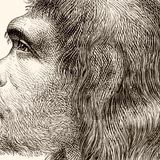
Scientists have created mini brains containing Neanderthal DNA
Stay Updated on Developing StoriesView in AppBy Katie Hunt, CNN(CNN) We now know that many of us are with our genes carrying traces of past encounters between our early ancestors and the Stone Age hominins that populated Europe until around 40,000 years ago.The evidence that early humans interbred with Neanderthals emerged in 2010 after scientists led by pioneered methods to extract, sequence and analyze ancient DNA from Neanderthal bones and mapped their genome in detail.Now, a team of European researchers has taken that science to the next level, growing blobs of brain tissue from human...…Stay Updated on Developing StoriesView in AppBy Katie Hunt, CNN(CNN) We now know that many of us are with our genes carrying traces of past encounters between our early ancestors and the Stone Age hominins that populated Europe until around 40,000 years ago.The evidence that early humans interbred with Neanderthals emerged in 2010 after scientists led by pioneered methods to extract, sequence and analyze ancient DNA from Neanderthal bones and mapped their genome in detail.Now, a team of European researchers has taken that science to the next level, growing blobs of brain tissue from human...WW…
